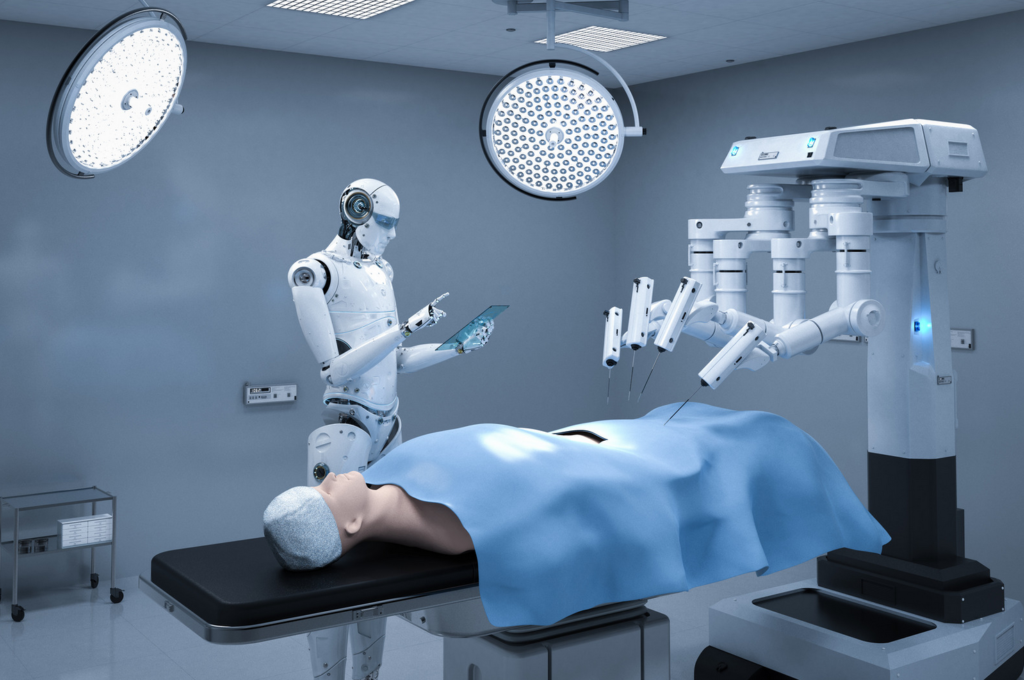Robotics in healthcare is rapidly advancing, offering transformative solutions that enhance patient care and streamline medical processes. From surgical robots to robotic exoskeletons, these innovations are revolutionizing the way healthcare is delivered, improving outcomes, and increasing efficiency across various medical fields. This article explores the impact of robotics on patient care, highlighting key applications, benefits, and future trends in the field.
The Impact of Robotics on Surgical Procedures
Robotic-assisted surgery represents one of the most significant advancements in medical technology. Surgical robots, such as the da Vinci Surgical System, have revolutionized minimally invasive procedures by providing surgeons with greater precision and control. These systems allow for smaller incisions, reduced blood loss, and faster recovery times compared to traditional surgery.
Benefits of Robotic Surgery:
- Enhanced Precision: Robotic arms offer precise movements and flexibility, allowing for intricate procedures with high accuracy.
- Reduced Recovery Time: Minimally invasive techniques lead to less trauma, shorter hospital stays, and quicker recovery for patients.
- Improved Visualization: High-definition 3D imaging and magnification enhance the surgeon’s view of the surgical site.
Robotic Rehabilitation: Advancements in Physical Therapy
Robotic rehabilitation devices are transforming physical therapy by providing tailored, consistent, and intensive rehabilitation. Robotic exoskeletons and rehabilitation robots are designed to assist patients with mobility impairments, stroke recovery, and musculoskeletal injuries.

Key Developments in Robotic Rehabilitation:
- Exoskeletons for Mobility: Wearable robotic exoskeletons support patients with spinal cord injuries or mobility issues, enabling them to walk and perform daily activities.
- Robotic Physical Therapy: Devices like the Lokomat provide guided therapy sessions, improving the effectiveness of rehabilitation for stroke and injury recovery.
- Personalized Therapy: Advanced robotics offer adaptive therapy programs that adjust to the patient’s progress, ensuring optimal rehabilitation outcomes.
Robotic Assistance in Diagnostic and Patient Monitoring
Robotic systems are also making significant strides in diagnostic and patient monitoring applications. These robots can perform routine tasks, manage patient data, and provide real-time monitoring, freeing up healthcare professionals to focus on more complex tasks.
Applications of Robotics in Diagnostics:
- Automated Laboratory Testing: Robots streamline laboratory workflows by automating sample handling, processing, and analysis, increasing throughput and accuracy.
- Remote Monitoring: Robotic systems equipped with sensors and AI algorithms monitor patient vital signs, detect abnormalities, and alert healthcare providers to potential issues.
- Robotic Assistance in Imaging: Advanced robotic systems assist in imaging procedures, enhancing the accuracy of diagnostics and reducing the need for repeat tests.
Challenges and Considerations in Implementing Robotic Technologies
While the benefits of robotics in healthcare are substantial, there are challenges and considerations that need to be addressed. The integration of robotic systems into healthcare settings involves significant investment, training, and regulatory compliance.
Challenges in Robotics Implementation:
- High Costs: The acquisition and maintenance of robotic systems can be expensive, posing financial challenges for healthcare institutions.
- Training Requirements: Healthcare professionals need specialized training to operate and manage robotic systems effectively.
- Regulatory and Safety Concerns: Ensuring the safety and efficacy of robotic systems requires stringent regulatory oversight and continuous monitoring.
The Future of Robotics in Healthcare
The future of robotics in healthcare promises even greater advancements and innovations. Emerging technologies, such as AI integration and next-generation robotic systems, are set to further enhance patient care and medical outcomes.
Future Trends in Robotics:
- AI Integration: Combining AI with robotics will enable more sophisticated decision-making, predictive analytics, and personalized patient care.
- Telemedicine Robots: Robots capable of remote operations will expand access to healthcare services, particularly in underserved or remote areas.
- Enhanced Surgical Robots: Future surgical robots will offer even greater precision, flexibility, and capabilities, further improving surgical outcomes.
Frequently Asked Questions (FAQ) about Robotics in Healthcare
Q1: What are robotic-assisted surgeries?
A: Robotic-assisted surgeries involve the use of robotic systems to aid surgeons in performing minimally invasive procedures. These robots offer enhanced precision, control, and visualization, resulting in smaller incisions and faster recovery times.
Q2: How do robotic rehabilitation devices work?
A: Robotic rehabilitation devices, such as exoskeletons and therapy robots, assist patients with mobility impairments or injuries by providing guided movement and support. These devices help improve motor function and facilitate recovery through personalized therapy.
Q3: What are the benefits of robotic systems in diagnostics?
A: Robotic systems in diagnostics automate laboratory processes, enhance accuracy, and enable real-time monitoring of patient vital signs. They also assist in imaging procedures, improving diagnostic precision and reducing the need for repeat tests.
Q4: What challenges are associated with implementing robotics in healthcare?
A: Challenges include the high costs of acquiring and maintaining robotic systems, the need for specialized training for healthcare professionals, and ensuring regulatory compliance and safety.
Q5: What are some future trends in robotics for healthcare?
A: Future trends include the integration of AI for improved decision-making, the development of telemedicine robots for remote healthcare services, and advancements in surgical robots for greater precision and flexibility.
Q6: How do robotic exoskeletons aid in mobility?
A: Robotic exoskeletons support individuals with mobility impairments by providing mechanical assistance that enables walking and movement. These devices help patients regain independence and improve their quality of life.
Q7: What role does AI play in robotic surgery?
A: AI enhances robotic surgery by providing advanced analytics, improving surgical precision, and enabling real-time adjustments during procedures. AI algorithms assist in planning, execution, and monitoring of surgical operations.